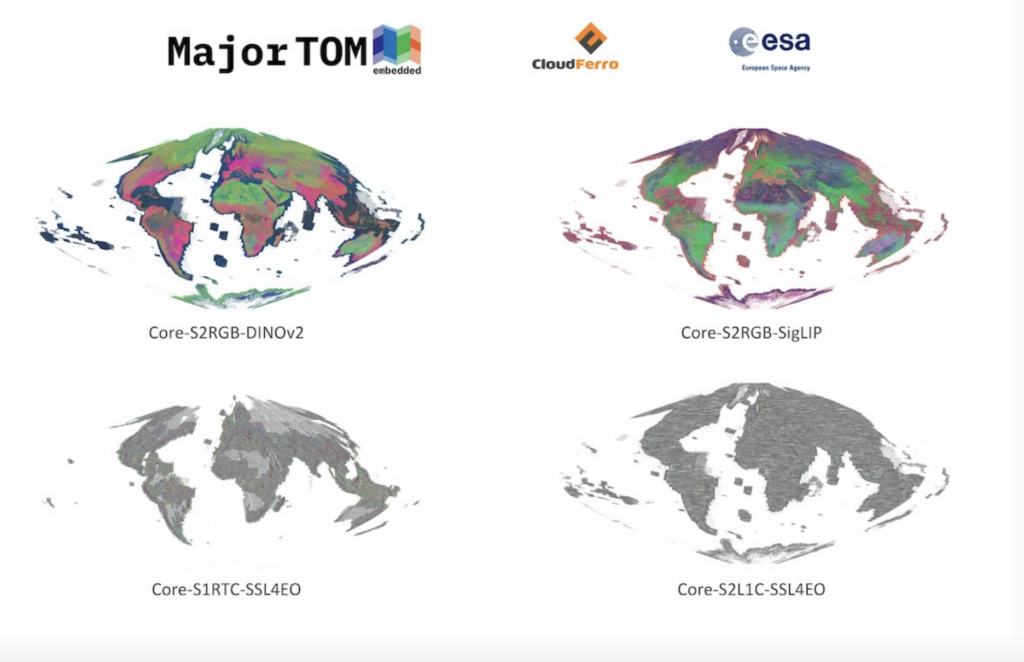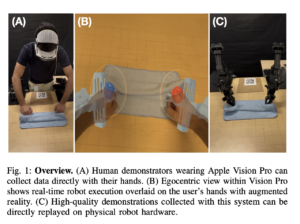CloudFerro and ESA Φ-lab Launch the First Global Embeddings Dataset for Earth Observations

CloudFerro and European Space Agency (ESA) Φ-lab have introduced the first global embeddings dataset for Earth observations, a significant development in geospatial data analysis. This dataset, part of the Major TOM project, aims to provide standardized, open, and accessible AI-ready datasets for Earth observation. This collaboration addresses the challenge of managing and analyzing the massive archives of Copernicus satellite data while promoting scalable AI applications.
The Role of Embedding Datasets in Earth Observation
The ever-increasing volume of Earth observation data presents challenges in processing and analyzing large-scale geospatial imagery efficiently. Embedding datasets tackle this issue by transforming high-dimensional image data into compact vector representations. These embeddings encapsulate key semantic features, facilitating faster searches, comparisons, and analyses.
The Major TOM project focuses on the geospatial domain, ensuring that its embedding datasets are compatible and reproducible for various Earth observation tasks. By leveraging advanced deep learning models, these embeddings streamline the processing and analysis of satellite imagery on a global scale.
Features of the Global Embeddings Dataset
The embedding datasets, derived from Major TOM Core datasets, include over 60 TB of AI-ready Copernicus data. Key features include:
Comprehensive Coverage: With over 169 million data points and more than 3.5 million unique images, the dataset provides thorough representation of Earth’s surface.
Diverse Models: Generated using four distinct models—SSL4EO-S2, SSL4EO-S1, SigLIP, and DINOv2—the embeddings offer varied feature representations tailored to different use cases.
Efficient Data Format: Stored in GeoParquet format, the embeddings integrate seamlessly with geospatial data workflows, enabling efficient querying and compatibility with processing pipelines.
Embedding Methodology
The creation of the embeddings involves several steps:
Image Fragmentation: Satellite images are divided into smaller patches suitable for model input sizes, preserving geospatial details.
Preprocessing: Fragments are normalized and scaled according to the requirements of the embedding models.
Embedding Generation: Preprocessed fragments are processed through pretrained deep learning models to create embeddings.
Data Integration: The embeddings and metadata are compiled into GeoParquet archives, ensuring streamlined access and usability.
This structured approach ensures high-quality embeddings while reducing computational demands for downstream tasks.
Applications and Use Cases
The embedding datasets have diverse applications, including:
Land Use Monitoring: Researchers can track land use changes efficiently by linking embedding spaces to labeled datasets.
Environmental Analysis: The dataset supports analyses of phenomena like deforestation and urban expansion with reduced computational costs.
Data Search and Retrieval: The embeddings enable fast similarity searches, simplifying access to relevant geospatial data.
Time-Series Analysis: Consistent embedding footprints facilitate long-term monitoring of changes across different regions.
Computational Efficiency
The embedding datasets are designed for scalability and efficiency. The computations were performed on CloudFerro’s CREODIAS cloud platform, utilizing high-performance hardware such as NVIDIA L40S GPUs. This setup enabled the processing of trillions of pixels from Copernicus data while maintaining reproducibility.
Standardization and Open Access
A hallmark of the Major TOM embedding datasets is their standardized format, which ensures compatibility across models and datasets. Open access to these datasets fosters transparency and collaboration, encouraging innovation within the global geospatial community.
Advancing AI in Earth Observation
The global embeddings dataset represents a significant step forward in integrating AI with Earth observation. Enabling efficient processing and analysis equips researchers, policymakers, and organizations to better understand and manage the Earth’s dynamic systems. This initiative lays the groundwork for new applications and insights in geospatial analysis.
Conclusion
The partnership between CloudFerro and ESA Φ-lab exemplifies progress in the geospatial data industry. By addressing the challenges of Earth observation and unlocking new possibilities for AI applications, the global embeddings dataset enhances our capacity to analyze and manage satellite data. As the Major TOM project evolves, it is poised to drive further advancements in science and technology.
Check out the Paper and Dataset. All credit for this research goes to the researchers of this project. Also, don’t forget to follow us on Twitter and join our Telegram Channel and LinkedIn Group. Don’t Forget to join our 60k+ ML SubReddit.
🚨 Trending: LG AI Research Releases EXAONE 3.5: Three Open-Source Bilingual Frontier AI-level Models Delivering Unmatched Instruction Following and Long Context Understanding for Global Leadership in Generative AI Excellence….
Aswin AK is a consulting intern at MarkTechPost. He is pursuing his Dual Degree at the Indian Institute of Technology, Kharagpur. He is passionate about data science and machine learning, bringing a strong academic background and hands-on experience in solving real-life cross-domain challenges.












